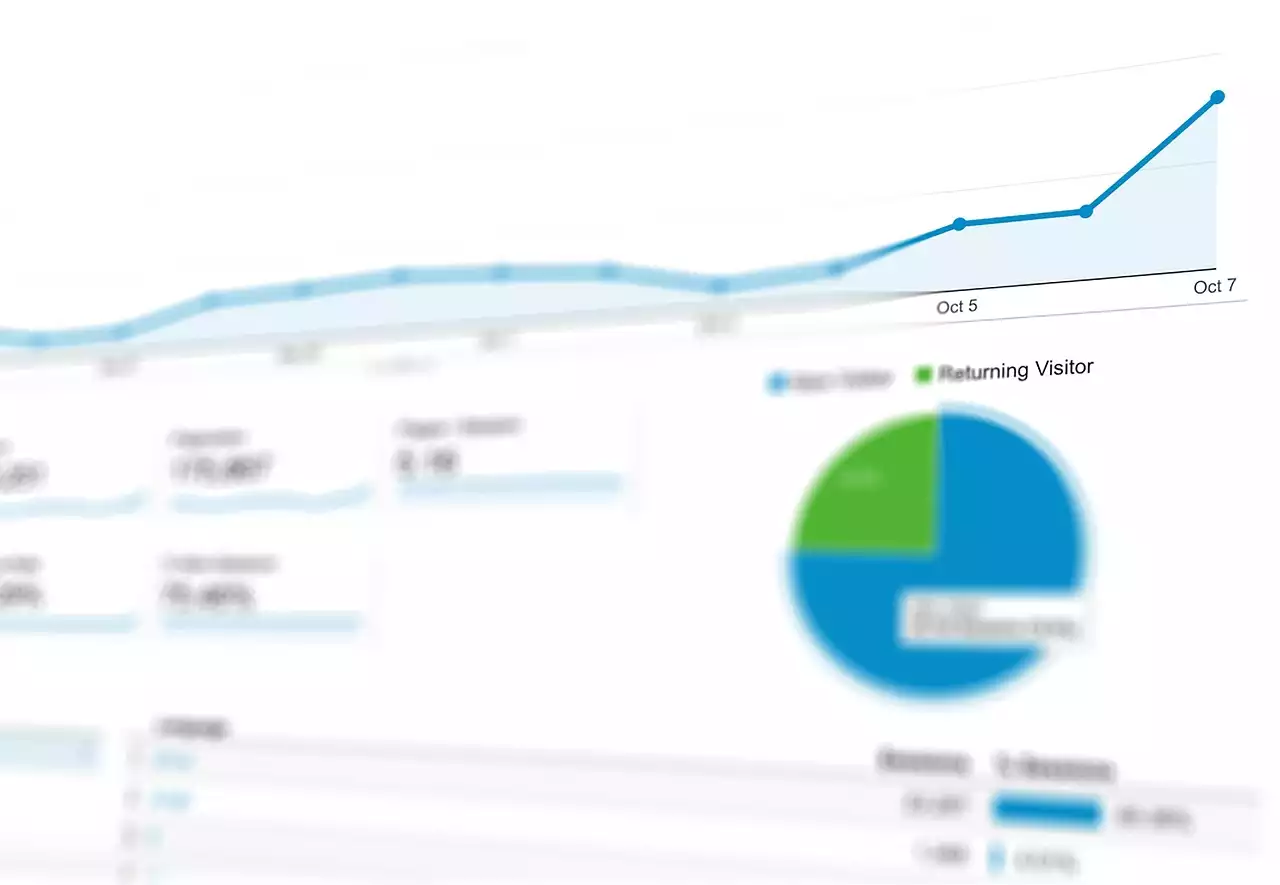Benefits of using Google Analytics
Google Analytics is a free web analytics tool that can help you track and analyze data about your website's visitors. Here are some of the benefits of using Google Analytics:
1. Track website traffic
Google Analytics allows you to see how many people are visiting your website, where they're coming from, and what they're doing once they get there. This information can help you make informed decisions about your website's content, design, and marketing strategy.
2. Identify traffic sources
Google Analytics can show you where your website traffic is coming from. This information can help you determine which marketing channels are most effective at driving traffic to your website.
3. Analyze user behavior
Google Analytics can track user behavior on your website, such as how long they stay on a page, which pages they visit, and which links they click on. This information can help you optimize your website's user experience and improve your conversion rate.
4. Measure website performance
Google Analytics can help you measure your website's performance by tracking important metrics like bounce rate, time on site, and conversion rate. This information can help you identify areas of your website that need improvement and make data-driven decisions to optimize your website.
Setting up Google Analytics on your website
Setting up Google Analytics on your website is a straightforward process. Here's how to do it:
1. Create a Google Analytics account
To use Google Analytics, you'll need to create a Google Analytics account. Go to the Google Analytics website and click the "Sign up" button. Follow the prompts to create your account.
2. Set up your website property
Once you've created your account, you'll need to set up a website property. This will allow Google Analytics to track data about your website. Click the "Admin" button in the top menu and select "Create Property" from the dropdown menu. Follow the prompts to set up your website property.
3. Add the tracking code to your website
Once you've set up your website property, you'll need to add the tracking code to your website. This code will allow Google Analytics to track data about your website visitors. Copy the tracking code from your Google Analytics account and paste it into the header of your website. You can use a plugin or manually add the code to your website.
Understanding Google Analytics reports
Once you've set up Google Analytics on your website, you'll have access to a wide range of reports that can provide valuable insights into your website's performance. Here are some of the most important reports to pay attention to:
1. Audience overview
The audience overview report provides information about your website's visitors, such as their age, gender, and location. This information can help you tailor your website's content and marketing strategy to your target audience.
2. Traffic sources
The traffic sources report shows you where your website traffic is coming from, such as search engines, social media, or other websites. This information can help you determine which marketing channels are most effective at driving traffic to your website.
3. Behavior flow
The behavior flow report shows you how visitors navigate through your website. This information can help you identify areas of your website that need improvement and optimize your website's user experience.
4. Conversion tracking
The conversion tracking report shows you how many visitors are completing a specific action on your website, such as making a purchase or filling out a contact form. This information can help you measure your website's performance and make data-driven decisions to improve your conversion rate.
Key metrics to track in Google Analytics
There are several key metrics that you should track in Google Analytics to measure your website's performance and identify areas for improvement. Here are some of the most important metrics to pay attention to:
1. Bounce rate
The bounce rate measures the percentage of visitors who leave your website after only viewing one page. A high bounce rate can indicate that your website's content or user experience needs improvement.
2. Time on site
The time on site measures how long visitors spend on your website. This metric can help you identify which pages on your website are most engaging to visitors.
3. Conversion rate
The conversion rate measures the percentage of visitors who complete a specific action on your website, such as making a purchase or filling out a contact form. This metric can help you measure your website's performance and identify areas for improvement.
4. Exit rate
The exit rate measures the percentage of visitors who leave your website from a specific page. This metric can help you identify which pages on your website need improvement to keep visitors engaged.
Using Google Analytics to improve website performance
Now that you know how to set up Google Analytics and track important metrics, it's time to use this data to improve your website's performance. Here are some tips for using Google Analytics to optimize your website:
1. Use A/B testing
A/B testing involves creating two versions of a web page and testing them to see which one performs better. By using Google Analytics to track the performance of each version, you can make data-driven decisions about which version to use.
2. Optimize your website's user experience
Use Google Analytics to identify areas of your website that are causing high bounce rates or low time on site. Make changes to your website's content and user experience to improve engagement and keep visitors on your website longer.
3. Improve your website's SEO
Use Google Analytics to identify which keywords are driving traffic to your website and which pages are ranking well in search engine results. Use this information to optimize your website's content for search engines and improve your website's SEO.
4. Identify high-performing content
Use Google Analytics to identify which pages on your website are most popular with visitors. Use this information to create more content that is similar to your high-performing pages.
Advanced Google Analytics features
Google Analytics offers several advanced features that can help you dive deeper into your website's performance data. Here are some of the most useful advanced features to explore:
1. Custom reports
Custom reports allow you to create reports that are tailored to your specific business needs. You can include only the data that is most important to you and exclude data that is not relevant.
2. Segments
Segments allow you to filter your website's data by specific criteria, such as location or device type. This can help you identify trends in your website's performance and make data-driven decisions.
3. Goals
Goals allow you to track specific actions on your website, such as making a purchase or filling out a contact form. You can use goals to measure your website's performance and identify areas for improvement.
Troubleshooting common issues with Google Analytics
While Google Analytics is a powerful tool, it's not without its issues. Here are some common issues that you may encounter when using Google Analytics and how to troubleshoot them:
1. Incorrect tracking code installation
If your Google Analytics reports are not showing any data, it's possible that the tracking code was not installed correctly on your website. Double-check that the tracking code is installed in the header of your website and that it is the correct code for your Google Analytics account.
2. Missing data
If you notice that some data is missing from your Google Analytics reports, it's possible that there is a problem with the tracking code or that some website pages are not being tracked. Check that the tracking code is installed on all pages of your website and that there are no errors in the code.
3. Spam traffic
If you notice that your website is receiving a lot of spam traffic, it's possible that your Google Analytics data is being skewed. You can filter out spam traffic in your Google Analytics account by creating a filter that excludes traffic from known spam domains.
Integrating Google Analytics with other tools
Google Analytics can be integrated with a wide range of other tools to enhance your website's performance tracking and analysis. Here are some of the most useful tools to integrate with Google Analytics:
1. Google Search Console
Google Search Console allows you to monitor your website's performance in Google search results. By integrating Google Search Console with Google Analytics, you can see which search queries are driving traffic to your website and how your website is performing in search results.
2. Google Ads
Google Ads allows you to create and manage online advertising campaigns. By integrating Google Ads with Google Analytics, you can see which ads are driving traffic to your website and how those visitors are interacting with your website.
3. CRM software
Integrating Google Analytics with your CRM software allows you to track website visitors who have interacted with your business in other ways, such as filling out a contact form or making a purchase. This can help you create more targeted marketing campaigns and improve your customer retention.









